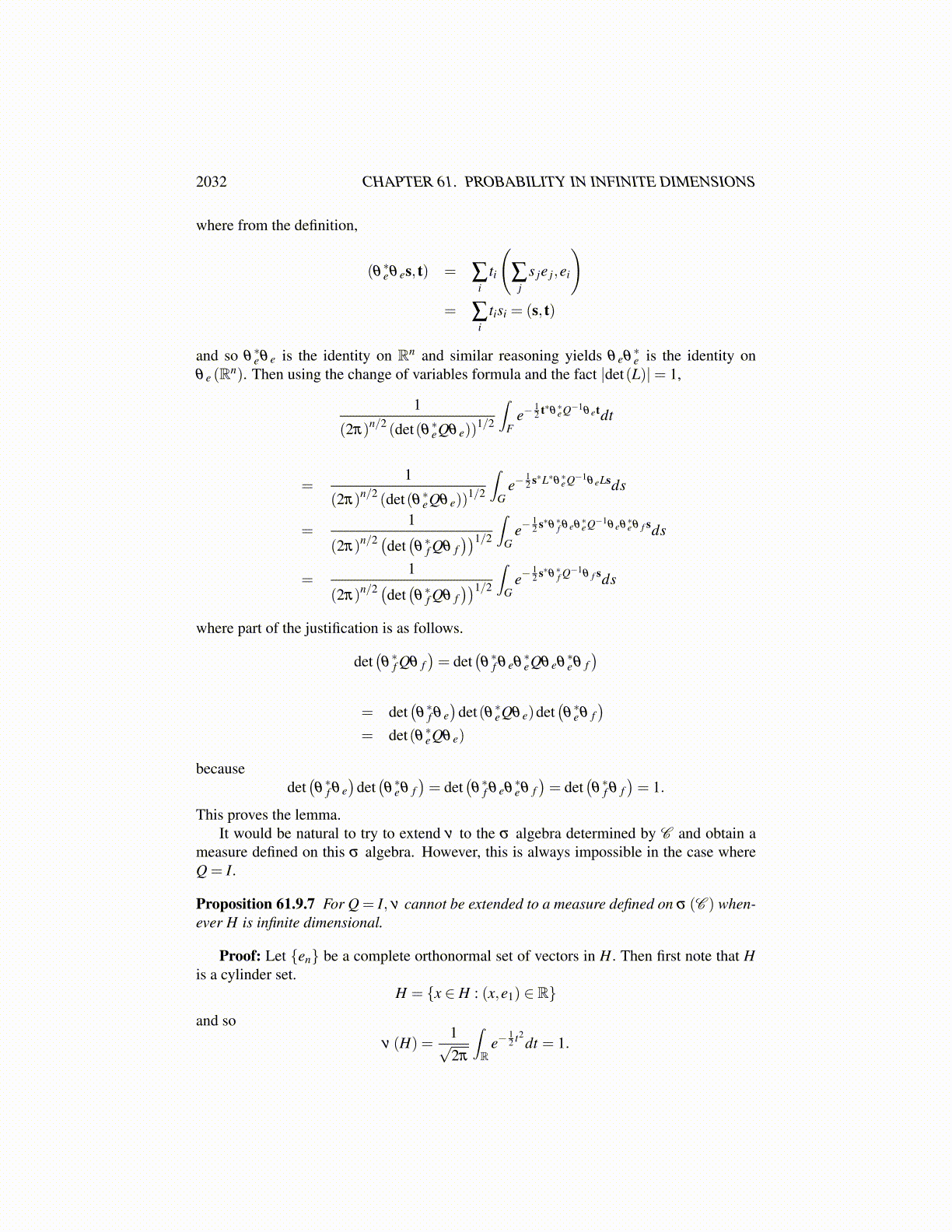
2032 CHAPTER 61. PROBABILITY IN INFINITE DIMENSIONS
combinations is dense in H ′ and so the conclusion of the lemma follows from Lemma59.4.2 on Page 1870. This proves the lemma.
Also note that the mapping
x→ ((x,e1) , · · · ,(x,en))
is a σ (C ) measurable map. Restricting it to span(e1, · · · ,en) , it is Borel measurable. Nextis a definition of a Gaussian measure defined on C . While this is what it is called, it is afake measure in general because it cannot be extended to a countably additive measure onσ (C ). This will be shown below.
Definition 61.9.5 Let Q ∈L (H,H) be self adjoint and satisfy
(Qx,x)> 0
for all x ∈ H,x ̸= 0. Define ν on the cylinder sets, C by the following rule. For {ek}nk=1 an
orthonormal set in H,
ν ({x ∈ H : ((x,e1) , · · · ,(x,en)) ∈ F})
≡ 1
(2π)n/2 (det(θ ∗Qθ))1/2
∫F
e−12 t∗θ∗Q−1θ tdt.
where here
θ t≡n
∑i=1
tiei.
Note that the cylinder set is of the form
θF + span(e1, · · · ,en)⊥ .
Thus if B+M⊥ is a typical cylinder set, choose an orthonormal basis for M,{ek}nk=1 and
do the above definition with F = θ−1B.
To see this last claim which is like what was done earlier, let
((x,e1) , · · · ,(x,en)) ∈ F.
Then θ ((x,e1) , · · · ,(x,en)) = ∑i (x,ei)ei = Px and so
x = x−Px+Px = x−Px+θ ((x,e1) , · · · ,(x,en))
∈ θF + span(e1, · · · ,en)⊥
Thus{x ∈ H : ((x,e1) , · · · ,(x,en)) ∈ F} ⊆ θF + span(e1, · · · ,en)
⊥
To see the other inclusion, if t ∈ F and y ∈ span(e1, · · · ,en)⊥ , then if x = θ t, it follows
ti = (x,ei)
and so ((x,e1) , · · · ,(x,en)) ∈ F. But (y,ek) = 0 for all k and so x+ y is in
{x ∈ H : ((x,e1) , · · · ,(x,en)) ∈ F} .